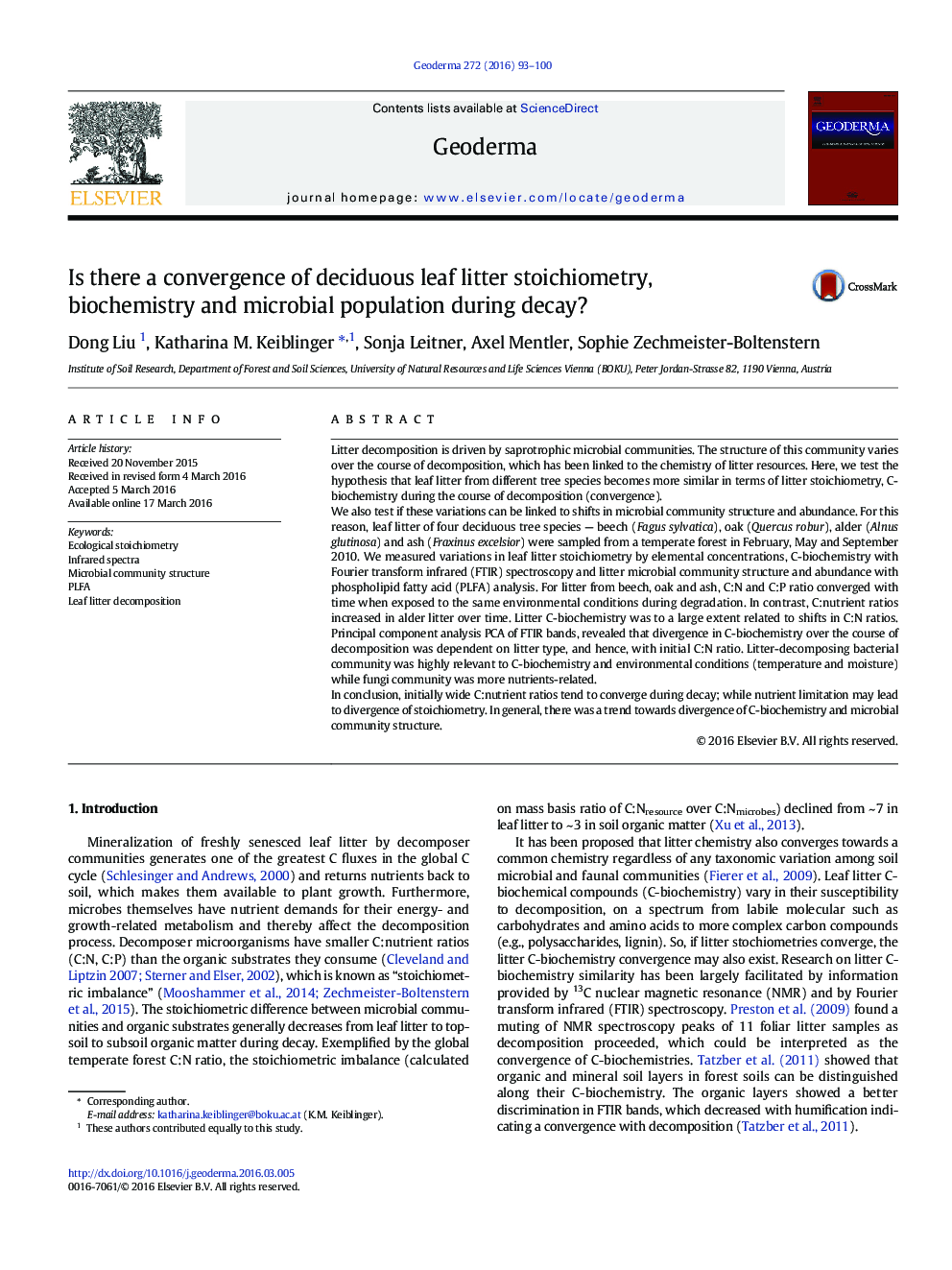| کد مقاله | کد نشریه | سال انتشار | مقاله انگلیسی | نسخه تمام متن |
|---|---|---|---|---|
| 4572948 | 1629445 | 2016 | 8 صفحه PDF | دانلود رایگان |
• Leaf litter initial C:nutrient ratios are a valuable indicator for convergence of litter stoichiometry.
• Different deciduous leaf litter types tend to diverge over time in terms of C-biochemistry.
• Microbial communities inhabiting leaf litter specifically bacteria were strongly related to environmental factors.
Litter decomposition is driven by saprotrophic microbial communities. The structure of this community varies over the course of decomposition, which has been linked to the chemistry of litter resources. Here, we test the hypothesis that leaf litter from different tree species becomes more similar in terms of litter stoichiometry, C-biochemistry during the course of decomposition (convergence).We also test if these variations can be linked to shifts in microbial community structure and abundance. For this reason, leaf litter of four deciduous tree species — beech (Fagus sylvatica), oak (Quercus robur), alder (Alnus glutinosa) and ash (Fraxinus excelsior) were sampled from a temperate forest in February, May and September 2010. We measured variations in leaf litter stoichiometry by elemental concentrations, C-biochemistry with Fourier transform infrared (FTIR) spectroscopy and litter microbial community structure and abundance with phospholipid fatty acid (PLFA) analysis. For litter from beech, oak and ash, C:N and C:P ratio converged with time when exposed to the same environmental conditions during degradation. In contrast, C:nutrient ratios increased in alder litter over time. Litter C-biochemistry was to a large extent related to shifts in C:N ratios. Principal component analysis PCA of FTIR bands, revealed that divergence in C-biochemistry over the course of decomposition was dependent on litter type, and hence, with initial C:N ratio. Litter-decomposing bacterial community was highly relevant to C-biochemistry and environmental conditions (temperature and moisture) while fungi community was more nutrients-related.In conclusion, initially wide C:nutrient ratios tend to converge during decay; while nutrient limitation may lead to divergence of stoichiometry. In general, there was a trend towards divergence of C-biochemistry and microbial community structure.
Journal: Geoderma - Volume 272, 15 June 2016, Pages 93–100
